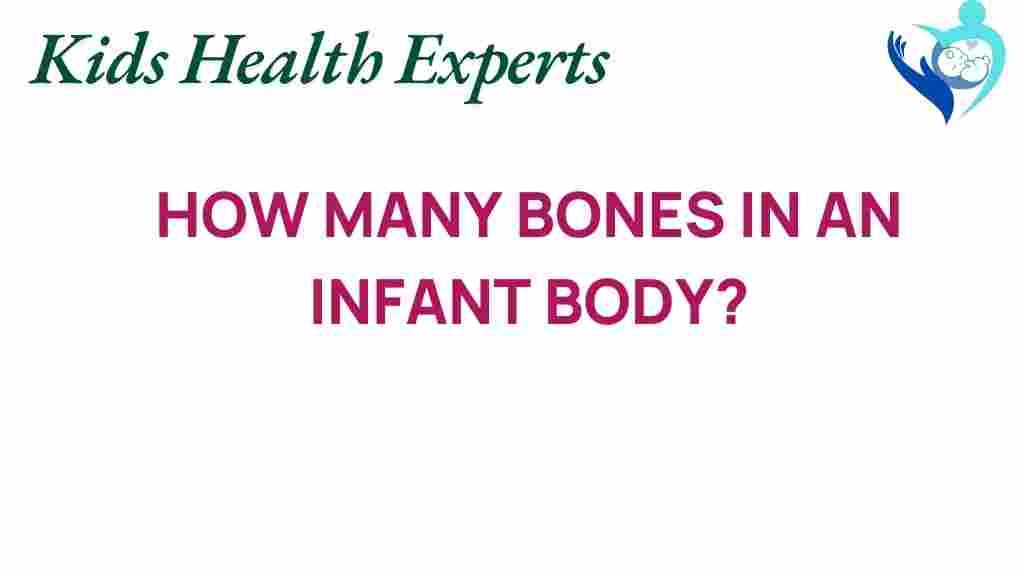Unraveling the Mystery: How Many Bones Are in an Infant’s Body?
Understanding infant bones is crucial for parents, caregivers, and healthcare professionals alike. As infants grow and develop, their skeletal system undergoes significant changes. This article will delve into the fascinating world of human anatomy, specifically focusing on the number of bones in an infant’s body, the stages of bone development, and the implications for pediatric health.
The Basics of Infant Bone Structure
At birth, an infant’s body consists of approximately 270 bones. This number may seem surprisingly high, especially when considering that adults only have 206 bones. The difference lies in the fact that many of the bones in an infant’s body are not yet fused together.
During early life, the skeletal system is primarily made up of cartilage, which is flexible and can accommodate growth. As the child matures, many of these cartilage structures gradually ossify or turn into bone. This process is vital for ensuring the proper development of the skeletal system as the child grows.
The Process of Bone Development
Bone development in infants is a complex process that can be broken down into several stages:
- Birth to 6 Months: During this stage, an infant’s bones are primarily made of cartilage. This allows for flexibility and growth as the infant begins to move and explore.
- 6 Months to 1 Year: As the infant grows, the bones start to ossify. This is particularly evident in areas such as the skull, which begins to harden to protect the developing brain.
- 1 Year to 3 Years: By this age, the number of bones decreases to around 206 as many bones fuse together. The long bones in the arms and legs begin to elongate, supporting the infant’s increasing mobility.
- 3 Years to 12 Years: Continued growth and development occur. The skeletal system becomes stronger, and the child gains more coordination and balance.
Understanding the Skeletal System
The skeletal system is an integral part of human anatomy, providing the framework for the body while protecting vital organs. In infants, the skeletal system is designed for rapid growth and flexibility. Key components include:
- Skull: Comprised of several bones that are not fully fused at birth, allowing for brain growth and passage through the birth canal.
- Spine: Composed of vertebrae that will fuse together over time, allowing for increased stability and support as the infant begins to stand and walk.
- Limbs: The long bones in the arms and legs grow rapidly during infancy, with growth plates that will eventually close as the child matures.
Pediatric Health and Bone Development
Understanding bone development is crucial for monitoring pediatric health. Any abnormalities in bone growth can impact a child’s overall development. Here are some common issues that can arise:
- Rickets: A condition caused by a deficiency of vitamin D, calcium, or phosphate, leading to weakened bones.
- Osteogenesis Imperfecta: A genetic disorder characterized by fragile bones that break easily.
- Growth Plate Injuries: Damage to the growth plates can affect the future growth of bones and limbs.
Growth Stages in Early Life
The growth stages of infants are fascinating, and understanding these stages helps caregivers ensure proper care. Here are some key milestones related to childhood development:
- Newborn (0-2 months): Limited movement; bones are highly flexible.
- Infant (2-12 months): Begins to crawl and stand, bones start to ossify.
- Toddler (1-3 years): Walking and increased mobility; bones strengthen.
- Preschool (3-5 years): More coordination; growth plates still open.
Medical Insights on Infant Bones
Medical professionals emphasize the importance of nutrition in supporting healthy bone development. The following nutrients play a vital role:
- Calcium: Essential for bone growth and density.
- Vitamin D: Aids in calcium absorption; often obtained through sunlight exposure or fortified foods.
- Protein: Critical for overall growth and development.
Parents can support their child’s bone health by ensuring a balanced diet rich in these nutrients. Consulting with a pediatrician for personalized recommendations is also advisable.
Conclusion: The Journey of Bone Development
In conclusion, the number of bones in an infant’s body is a dynamic figure that changes as the child grows. Starting with around 270 bones, the number decreases to 206 through the process of bone fusion and ossification. Understanding the intricacies of infant bones and their development is essential for monitoring pediatric health and ensuring that children achieve their growth milestones effectively.
For more information on human anatomy and child development, consider visiting this resource.
By keeping a close eye on your child’s growth stages and fostering a healthy lifestyle, you can help support their skeletal system as they embark on their journey through early life. Always consult with healthcare providers for any concerns regarding your child’s development and health.
This article is in the category Growth and created by KidsHealthExperts Team
